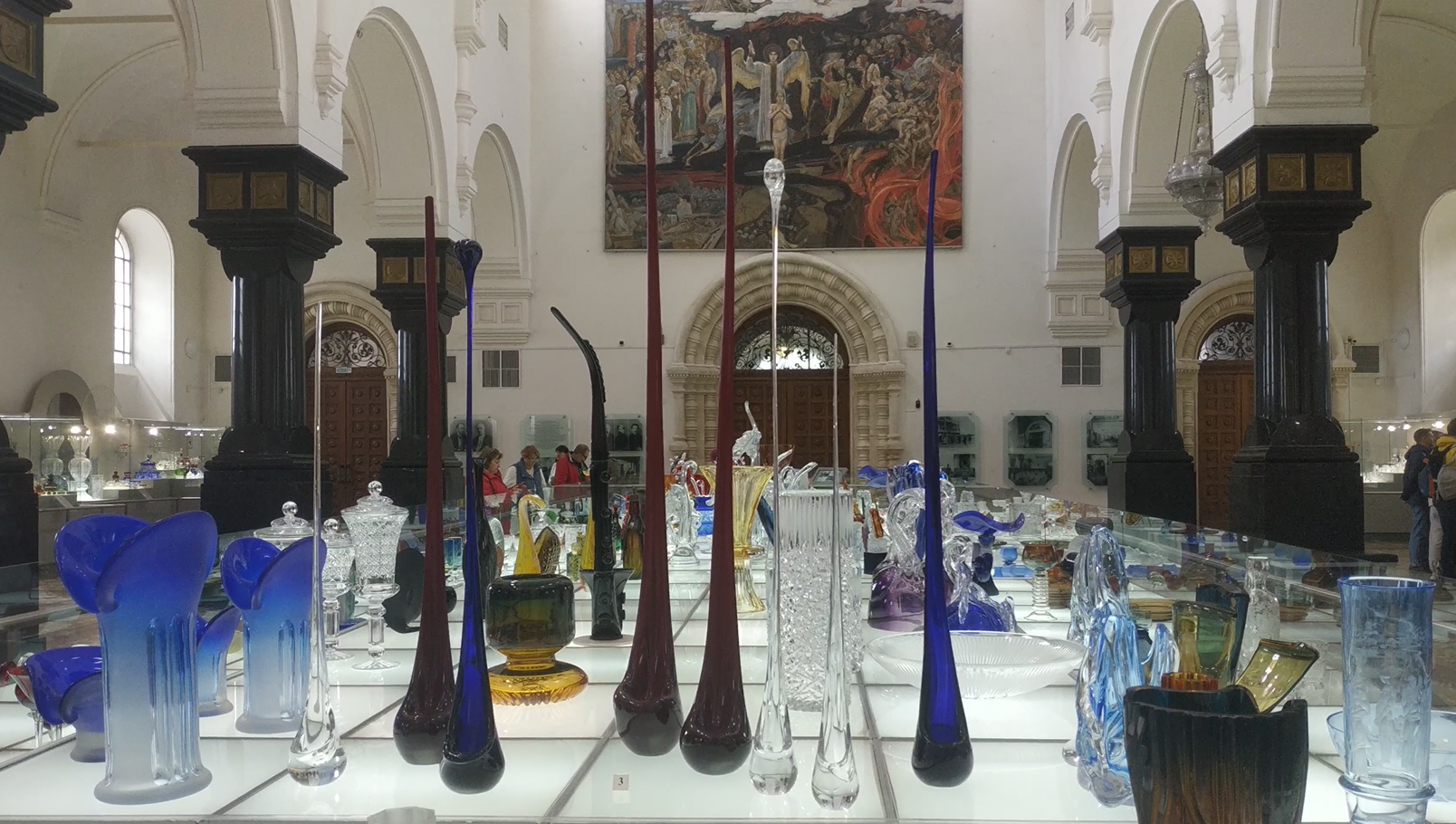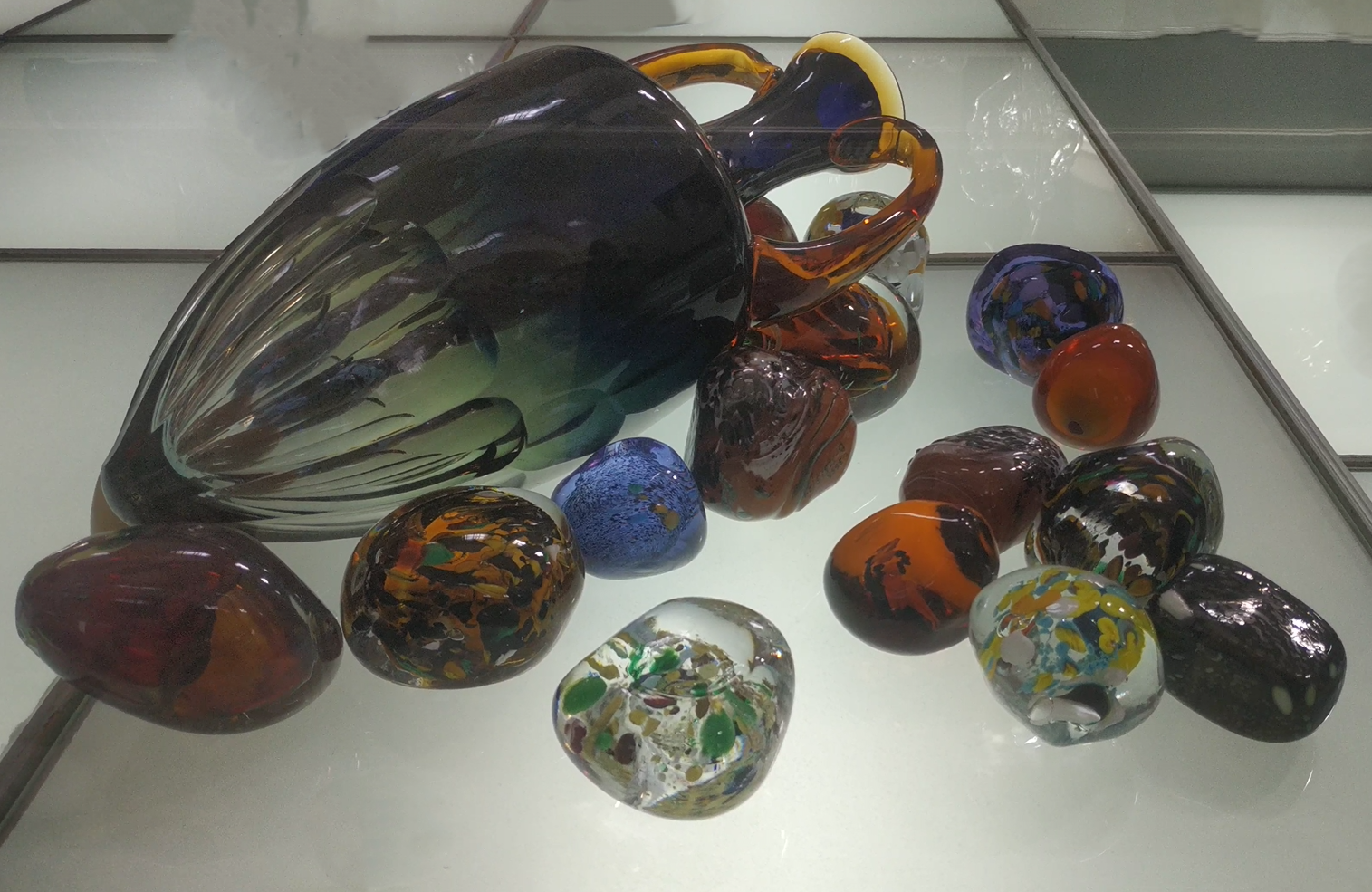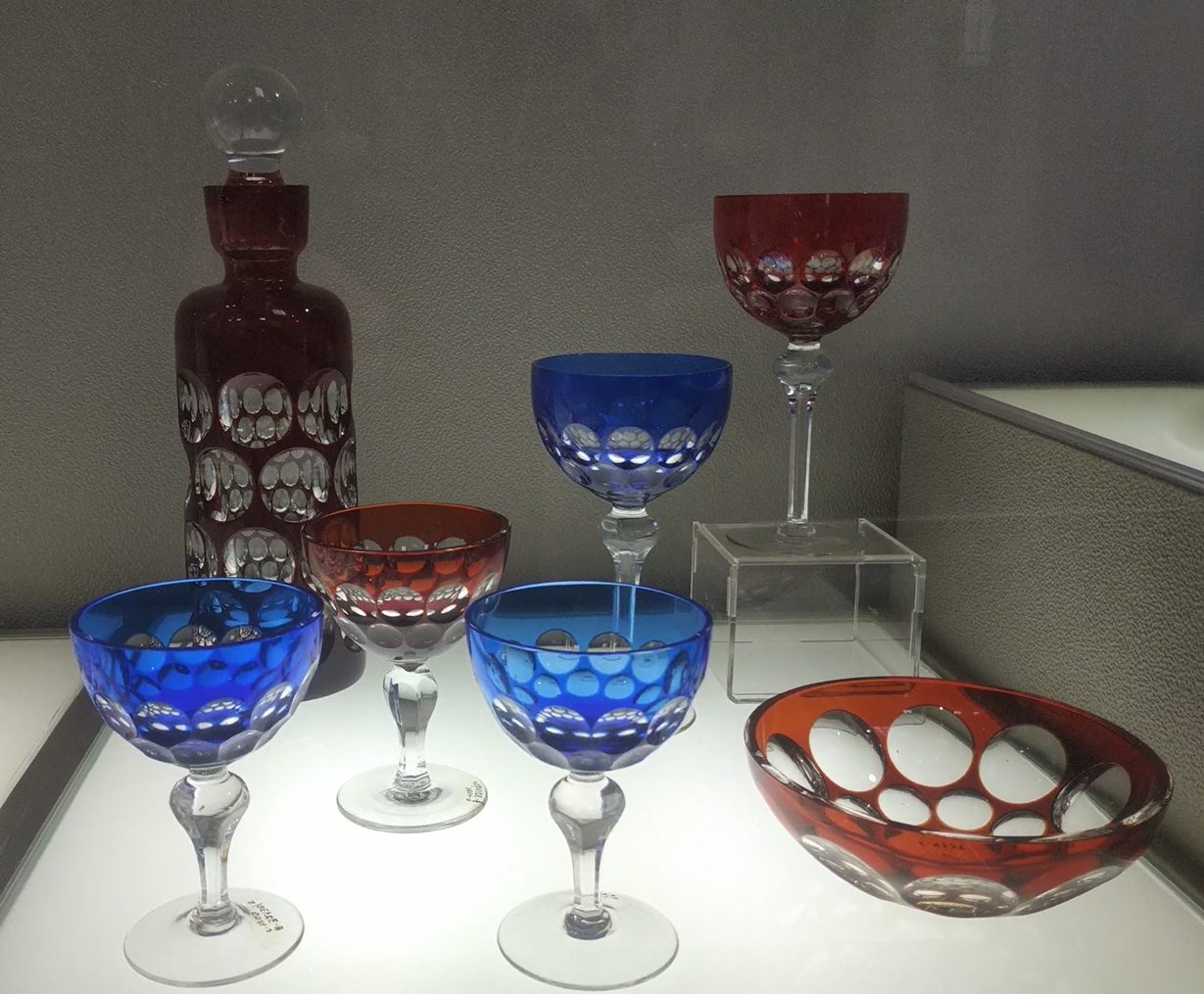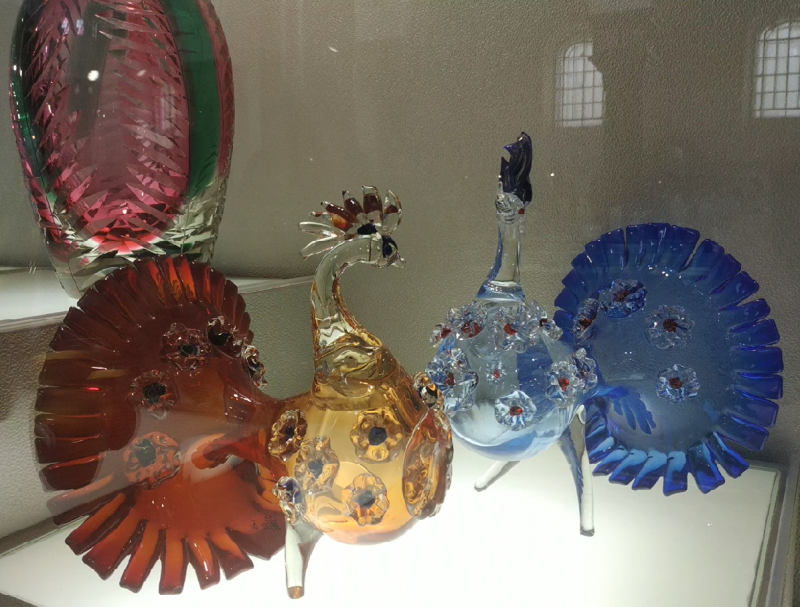When you visit Vladimir you have a few hours of your vacation time, you should definitely go to the capital of the Russian glass and crystal industry - the small town of Gus Khrustalny (Crystal Goose) located within one hour’s travel from the principal city of the region. It’s definitely worth the trip, at least to try understand (and fail to do this) how did the Russia’s most famous and largest glass and crystal making factory previously giving jobs to about 7,000 people and producing up to 200 tonnes of glassware and glass and crystal products per day, managed to go bankrupt?
Today, about 50 thousand people live in Gus Khrustalny. And frankly speaking, there is not many attractions to see in the town except for the factory museum, Gus Khrustalny is the most ordinary, quiet and calm principal town of a district. However, the museum itself is worth spending at least a few hours to get acquainted with its exponents since you cannot, highly likely, see such a collection of glass and crystal products anywhere in the world, the things displayed are more like high art works than consumer goods.

The history begins right near the linden square where the museum is located. An alley with old photographs depicting various historical stages in the life of the town and factory, leads to the museum, and the alley ends near the monument to industrialist Akim Maltsev who founded a crystal-making factory on the Gus River in 1746.
The excursion starts at the museum building. In fact, it was originally St. George’s Cathedral built by famous architect Leonty Benois in 1892 through 1903 in the so-called pseudo-Russian style. It is clear that at first, the building was decorated with a bell tower and a three-domed church but during the USSR days, they were demolished and the former cathedral was turned into a museum in the 1970s.
Visitors can admire a huge variety of glass and crystal products. In total, there are about 2,000 items displayed at the museum. By the way, do you know the difference between glass and crystal? The main difference is that crystal contains lead oxide added to increase the plasticity of the material. Thanks to lead oxide it is possible to cut and polish crystal pieces.

If there are no special agents at hand, other methods can be used to check the authenticity of the crystal thing right in the store, you need a pocket flashlight. Just direct its light on the object and if you see a bluish-violet hue, this is crystal. If the colour is dull green, most likely, it is soda-lime silica glass.
You can run a wet finger over the crystal thing or lightly tap it with a spoon - and hear a musical ringing with a slight echo. If no sound is heard, either the crystal thing is cracked or this is a thing made of ordinary glass. But you must also remember that only thin-walled crystal products can produce such sounds, a crystal vase is unlikely to be able to produce a musical sound.
You can find out all this if you come with a tour. But self-study of the museum exhibits (a ticket costs 200 roubles) can also give knowledge in the glass and crystal making process to tourists because each showcase is provided with detailed descriptions. For example, you can read that even 190 years ago, the so-called uranium glass was made at the factory, which glows with an ominous but very beautiful green colour if you direct an ultraviolet lamp at a winecup or vase. You shouldn’t worry about exposure: if the 19th century crystal has any level of radioactivity, it is only alpha radiation, which does not even pass through the skin, and gamma radiation can be dangerous only if there is more than 6 percent uranium in the glass thing. Glass contains maximum 1-2 percent of uranium.
We go further and find out, for example, that exactly the same small crystal winecup and a salad bowl were in the sideboard of your parents or your grandparents. And this crystal wonderful things were used only on major holidays! And you can see more interesting and beautiful sets for wine or whiskey or a set for wine punch (who remembers this kind of drink now?).
The variety of different winecups and sets for bottling alcoholic beverages in the museum’s exposition is amazing. There are the classic winecups that most parents and grandparents, probably, had in their sideboards, but there are also much more interesting, almost collectible items, such as a whiskey set.

By the way, today the museum occupies two halls and not one, as before, the second hall is on the back of the building, in the semi-basement. Its small exposition is mainly devoted to the history of the factory, however, in terms of crystal products, of course, there are also many beautiful things to see.
The museum management made separate expositions and this decision is interesting and very correct; there are stands on the walls illustrating various stages of the glass-making factory life and various glass and crystal blowing techniques, and in the middle of the hall, there is a huge “table”, on which glass and crystal products are presented as real art works and not consumer goods.
Of course, some people could use, perhaps, some of the exhibits for utilitarian purposes, but they are surely in the minority.
And indeed, how can anyone use, for example, a crystal thing blown using the so-called “hot glass-blowing” technique directly at the oven using traditional tools. Hot glass-blowing makes each piece unique, no matter how hard the experienced glass blower tries to reproduce the design, he will never make absolutely the same glass or crystal product.
There are also such crystal articles among the exhibits, the application of which is absolutely unclear at the first sight (and even at the second one). Isn’t this a real piece of art? For example, the sculptural composition “Hymn to Glass” that is a metal forged frame, on which 330 beautiful sprigged flowers made of blue and colourless crystal, 6 birds made in hot glass-blowing technique, 17 frosted bells and three balls are placed.
In this regard, it’s impossible to understand the bankruptcy of the factory, which, unfortunately, is common in Russia. Firstly, crystal itself has lost the importance that it had in every family of the USSR where all sideboards were full of various crystal things, vases and winecups. Today, no one needs so many crystal products in Russia, besides, there are more competitively priced crystal products from China, Türkiye and the Republic of Belarus.
The only thing that pleases is that the production of crystal products has survived - it is still preserved not only by individual craftsmen, but also by the only factory’s workshop producing handmade coloured crystal products under individual orders. There are small workshops in other settlements of the Gus Khrustalny district.
But this is another story.


